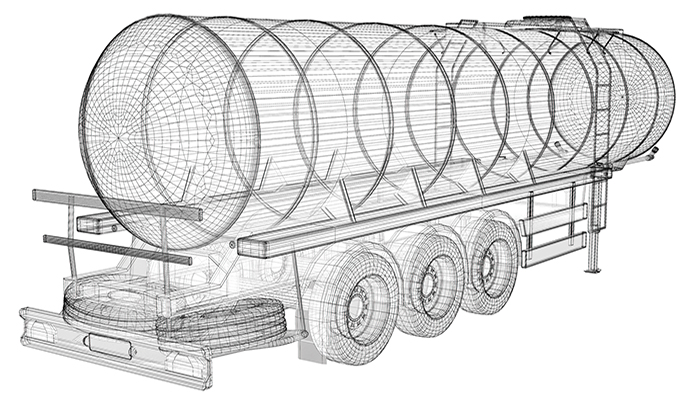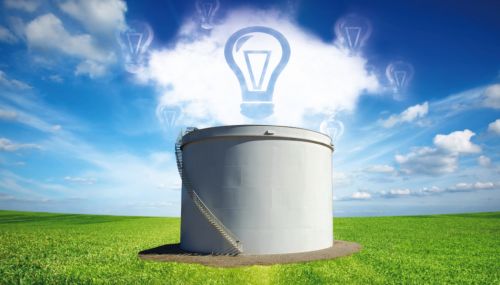All
Addressing the Logistical Challenges of Delivery
by John Coyle, ADD Systems

One of the key components of a successful oil or propane business is an efficient delivery department, but how do you achieve this goal? The logistical challenges are just that – challenging. You need to be able to make informed delivery decisions that maximize your profit. By implementing a robust dispatching process, in conjunction with wireless mobile devices in the field, you can achieve this goal.
Route Optimization
You have a number of customers in need of deliveries and a finite number of trucks to get it done. Which truck and driver combinations should deliver that product? And what is the most efficient route for each? You need to stay on top of road construction, weather conditions and Hazmat regulations. It is not always easy to get it right.
Of course, advanced planning it great, but it’s not always possible. You know there are plenty of hurdles thrown at your dispatcher during the day, like will-calls and run-outs. These can cause upheavals in your organized routes, undoing all your careful work. To make the best decisions about who to give that new call to, where to put it in a driver’s route, or how to quickly rectify a problem, you need to have all the important decision-making information at your fingertips. Where is the driver in the route? How much inventory is left? Which deliveries can potentially be skipped today and which ones are must-deliver stops? And you need to make decisions that minimize your drivers’ overtime. Keeping all these factors in mind can be overwhelming, but it’s essential in ensuring you’re making the best use of your drivers and your trucks.
What about other common issues that can stop a delivery from being made — locked gates, an unplowed driveway, an unfriendly dog, or even running out of product? You need to be able to communicate with the driver and quickly fix the problem – emphasis on the word “quickly” here. Time is money. You don’t want your truck sitting idle while the problem is worked out. Likewise, if your driver moves on to the next delivery in line, with each delivery, the truck will get further away from that stop, and turning around may mean a less and less profitable load. Great communication with your drivers and your customers is key here, but it can be time-consuming and eat into profit.
You also may run into a truck inventory issue. Even with all your planning, you may find that one fill or more went over the expected delivery gallons, and this may result in a truck running out of product before the route is complete. Is there another truck that can fill the remaining scheduled deliveries? Which deliveries must be delivered today and which can wait? Again, there are a lot of factors to consider to make sure you’re not only operating efficiently, but keeping all your customers happy.
And how can you minimize mistakes? Delivery logistics are complicated enough without the added difficulty of dealing with mistakes. Accidentally filling the wrong tank can cause you to run out of product before you finish the route, or even cause you to give away that product if a customer doesn’t agree to pay for the accidental delivery. A mistake like this can take a real chunk out of your profit.
Of course, you knew all this already; you are faced with these complications every day. So how can you overcome the logistical challenges? The answer is in a robust dispatching system with a wireless, real-time connection to your trucks – easy, fast and detailed communication.
In the initial planning stage, wouldn’t it be useful to hand the driver a truly optimized route from the start – a route that takes all current road conditions and Hazmat restrictions into account. A driver may know the area, but mapping optimization can cut miles and minutes out of even the best dispatchers’ routes.
Routing optimization isn’t just great for the initial planning; it’s essential throughout the day. You need the ability to add last-minute will-call or run-out stops during the day and re-optimize the route. Without this, a few calls can really hit your efficiency hard with extra miles.
Logistics Made Easy
For those unforeseen events during the day, you need information at your fingertips. A robust dispatching system with both graphical and grid/list view can help with this. A graphical view can give a great deal of information without crowding a display with words. A picture is worth a thousand words, and that’s what you need here to help you make expeditious, informed decisions.
What do you need to see on this dispatch display? There are a few absolutely necessary items, like truck location and position in route, current inventory, deliveries made and those still left to complete. Plus, that which is preferred by one dispatcher may not be ideal for another. So, you need some ability to tailor your display to individual preferences. Maybe you like to see the product for each customer, or maybe you like to see whether a call is a must-deliver stop. Your decisions can be made better and faster if you can see all the information that is important to you without going back and forth between screens.
There is other information as well – information that might help with decisions or troubleshooting throughout the day, that you don’t want to have to search for and lose valuable time. With the latest dispatch displays, you can get this information by rolling over a field to drill down on a ticket or truck to get more detail. The more clear information you can have on one screen, the better for quick, accurate decision-making.
Stay Connected to Your Drivers
What about efficient communication? So much time can be wasted in back-and-forth voice communication between dispatcher and driver. With a wireless dispatching connection and real-time information on the dispatch screen, most questions can be answered without verbal communication. For example, a dispatcher can add a phone order to a driver’s list, the route can be re-optimized and be wirelessly pushed down to the driver’s mobile device. No voice communication is needed.
Speaking of communication, what about those situations that need fixing right away – the locked gate, the blocked fill location, the mean dog? Messaging can be done right through a mobile device, saving talk time. The dispatcher can contact the customer, rectify the situation and notify the driver via a message on the device. Again, no talking required – fast and efficient.
How about those potential delivery mistakes? Filling the wrong tank, or delivering to the wrong customer, can be eliminated with the GPS capabilities of mobile devices today. GPS locations can be associated with an account and a fill location to stop costly accidents. Automatic location validation can limit human error.
The Right Solution
A wireless, real-time dispatch system gives you ready, easy access to all the necessary information to make the most informed decisions. You can move your product and manage your drivers’ time in the most efficient manner. If you want to take your delivery operations to the next level, this is the way to do it.
Related Posts
 Thinking about Onsite Storage? Start Here.
Thinking about Onsite Storage? Start Here.
Posted on December 23, 2025
 100 Years of Helping Fuel Retailers Deliver!
100 Years of Helping Fuel Retailers Deliver!
Posted on August 18, 2025
 U.S. Competing to Secure Critical Minerals
U.S. Competing to Secure Critical Minerals
Posted on June 16, 2025
 The Clean Air Act, the EPA, and State Regulations
The Clean Air Act, the EPA, and State Regulations
Posted on May 14, 2025
Enter your email to receive important news and article updates.
